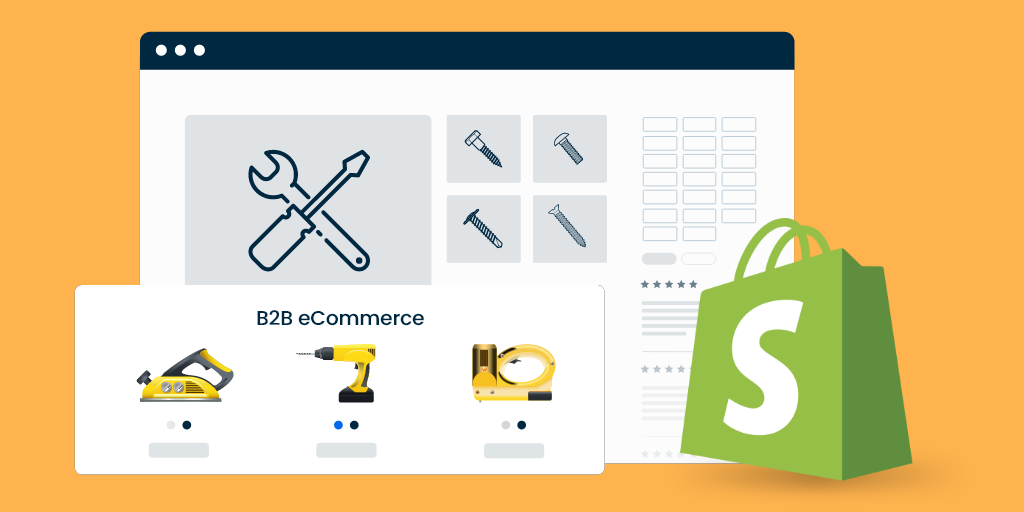How Businesses are Using Subscription eCommerce for Record-Breaking Profitability

For some industries like Food & Beverage, subscription eCommerce is the most obvious route to take when selling DTC online. In fact, when a business offers online subscriptions, they’re only digitizing an agelong retail trend.
Consumers have always preferred the convenience and hassle-free experience of having their pantry restocked before they run out of things. Instead of popping over at the store to buy the replenishments they need, customers prefer to subscribe to get the goods delivered on their schedule.
While subscriptions were already dominating some industries in retail, it’s interesting how this trend has penetrated other industries, which were traditionally not ideal fits for subscriptions.
In industries like apparel, jewelry, and makeup, people have historically bought ad-hoc only. There was no need for a subscription to these types of products. And yet, we’ve seen billion-dollar businesses like Stitch Fix and Birch Box changing everything we knew about subscriptions.
Today, you’ll find businesses in every industry bringing innovations to their business model so they can leverage the benefits of subscriptions and make the concept work for them.
The reality has dawned upon every business: subscription eCommerce can lead to breakthrough results – no matter which industry you’re in.
Table of Contents
- Eye-Popping Subscription eCommerce Statistics
- How Subscription eCommerce Delivers Value to Customers
- Why the Wall Street Loves Subscription Businesses
- Challenges Faced by Subscription eCommerce Businesses
- KPIs to Measure the Success of a Subscription eCommerce Business
- Examples of Subscription eCommerce Businesses
- Conclusion
Eye-Popping Subscription eCommerce Statistics
If you’re selling DTC but don’t yet offer subscriptions, here’re some jaw-dropping facts for you:
- The subscription eCommerce market has seen a growth rate from 68-100% varying in different industries and regions and is expected to reach $468 billion by 2025.
- By 2023, 75% of businesses selling DTC will have some kind of subscription offer.
- In the past three years, businesses with subscription eCommerce raised around $2.5 billion in venture capital funds.
How Subscription eCommerce Delivers Value to Customers
Subscription businesses generally fall into three categories: replenishment, curation, and access. A study by McKinsey found that among the total number of subscriptions, replenishments accounted for 32%, curations for 55%, and access for 13%.
Replenishment Subscriptions
In the replenishment category, we find products like groceries, essential food items, health foods, pet care products, medicines, supplements, etc. Anything a customer needs to buy regularly to restock falls into this category. Offering subscriptions to products in this category delivers convenience and a hassle-free shopping experience to customers.
Instead of visiting the store at the last moment or running out of stock and facing frustrations, customers can have peace of mind by subscribing to the essentials they need.
Curated Products Subscriptions
The other category caters to customers’ demand for delightful experiences and pleasant surprises. Businesses in this category aim to surprise and delight the customer by providing highly personalized experiences and a product selection that’s curated by experts. Products that are typically not replenished fall in this category for example apparel, makeup, toys, books, etc.
Curations provide a great opportunity for businesses that want to capture their share from the booming subscriptions market. These businesses can either supplement their current eCommerce strategy by offering subscriptions as an added-value service or starting a new business centered around curation subscriptions.
In curation subscriptions, the journey usually starts with a shopping quiz, which is used to collect data about the customer and get to know them at a deeper level. After the data is collected, the business uses that data to send the customer a personalized box containing their products.
Also Read: Product Recommendation Quiz – The Marketer’s Favorite Tool to Capture Data and Improve CX
Subscriptions for Access to Members-only Perks
Lastly, we have subscriptions that provide access to members-only perks. These perks can include lower prices, fast shipping, and exclusive products.
This type of subscription model offers a great opportunity for every business to create a recurring revenue stream by starting a membership program and offering a personalized and VIP experience to members.
Why the Wall Street Loves Subscription Businesses
Businesses with subscription models are pulling billion-dollar valuations. Here’s why Wall Street loves them:
Recurring Revenue
Recurring revenues give businesses stability during slow seasons. With recurring revenues, businesses can manage their cash flows and inventory levels more accurately and efficiently.
If you’re able to increase retention rate and control customer churn, recurring revenues can have a huge impact on your profits. Your sales per customer, customer lifetime values, and profit per customer increase while customer acquisition costs drop. This results in breakthrough profitability.
The Appeal of Predictability
The main reason why Wall Street loves subscription businesses is that their revenue is predictable. A business with a recurring revenue stream can better predict its annual revenue when compared to a business with one-time transactions that have to start from zero. This predictability allows the management to make better decisions and plan accordingly.
If your business is solely based on a subscription model, you can calculate your ARR, Annual Recurring Revenue, which is the sum of yearly subscriptions coming from all your subscribers. The ARR metric gives a good indication of the health of the company.
Hence, businesses with high ARR can easily secure a high valuation from Wall Street.
High Customer Lifetime Value
Customer lifetime value (LTV) is the total amount of revenue generated from one customer. If you’re able to retain a customer long enough, there is a potential to have really high LTV.
Retention, however, is a major challenge in subscription-based businesses, which we’ll discuss later in the post.
Robust Customer Insights for Marketing
Subscription businesses have a serious advantage over their non-subscription counterparts. The data they gain about their subscribers give them a clear edge. This data can be used for targeted marketing campaigns. This is another reason why subscription businesses can so often raise millions of dollars from investors.
Challenges Faced by Subscription eCommerce Businesses
While the anything-as-a-service business model is thriving and definitely has lucrative benefits, these businesses have challenges of their own.
- Customer Acquisition: When a business pivots to a subscription model, it becomes more difficult and costly to acquire customers.
- High Churn Rate: Subscription cancellations and high churn rates eat up a subscription business. This makes it important for a business to deliver a superior customer experience to minimize cancellations.
KPIs to Measure the Success of a Subscription eCommerce Business
Here are the key metrics subscription eCommerce businesses need to have their pulse on to measure how successful they are:
- Churn Rate
- Monthly Recurring Revenue
- Customer Lifetime Value
- Customer Acquisition Cost
- Average Profit per Customer
- Number of new subscribers per month
- Number of active subscribers
Examples of Subscription eCommerce Businesses
Here are 3 examples of businesses that are using subscription models- one for each category of subscriptions: replenishment, curation, and access.
FOGA: Subscriptions for Replenishments
FOGA is a health and wellness brand that makes plant-based shakes. Their vision is to make it easy for people to have their 5 portions of fruits and veggies a day.
For someone who loves their products, FOGA is something they’ll want to have every day. Having this insight about their customers, FOGA made a strategic move and rolled out a subscription feature on their website so their customers would never run out of their favorite shakes.
But offering subscriptions only wouldn’t have made them any different. To deliver a unique experience, FOGA included an element of personalization in their subscriptions and allowed customers to create their own subscription boxes.
So, when you decide to buy a FOGA subscription, you can pick and choose which products to add to your box and in what quantity. FOGA also gives you the ability to edit orders, swap products in them, edit the delivery address, rush or delay deliveries, and a lot more.
In a nutshell, FOGA took the familiar subscription concept but tailored it to fit their business perfectly.
Stitch Fix: Curated Selection of Clothing
Stitch Fix starts the customer off with a style quiz and uses advanced algorithms and data science to personalize the shopping experience.
When a customer takes the quiz, stylists at Stitch Fix use that data to curate a selection of clothing for the customer and deliver it on the schedule specified.
Stitch Fix offers both options – to shop on-demand or subscribe for a clothing box sent on the schedule set by the customer.
Amazon Prime – A Great Example of Access Memberships
It’s a prime example of a business that is using subscriptions to create an additional revenue stream for the business. Amazon has spread its wings everywhere from multivendor eCommerce to warehouse services, on-demand cloud computing platforms, movies, and whatnot.
For $12.99 per month, Amazon Prime gives its subscribers exclusive benefits like free expedited shipping, exclusive discounts, early access to deals, Prime Wardrobe that lets people try on clothes before purchasing, Prime entertainment and so much more.
If you want to roll out membership subscriptions, having a look at the Amazon playbook would be worthwhile, for sure.
Conclusion
Subscriptions are eating up the business landscape. With the recent projections and eye-popping statistics highlighted above, you should definitely consider rolling out a subscription program if you haven’t yet jumped on the bandwagon.
Want to get started with subscriptions? Consult our eCommerce developers today.




